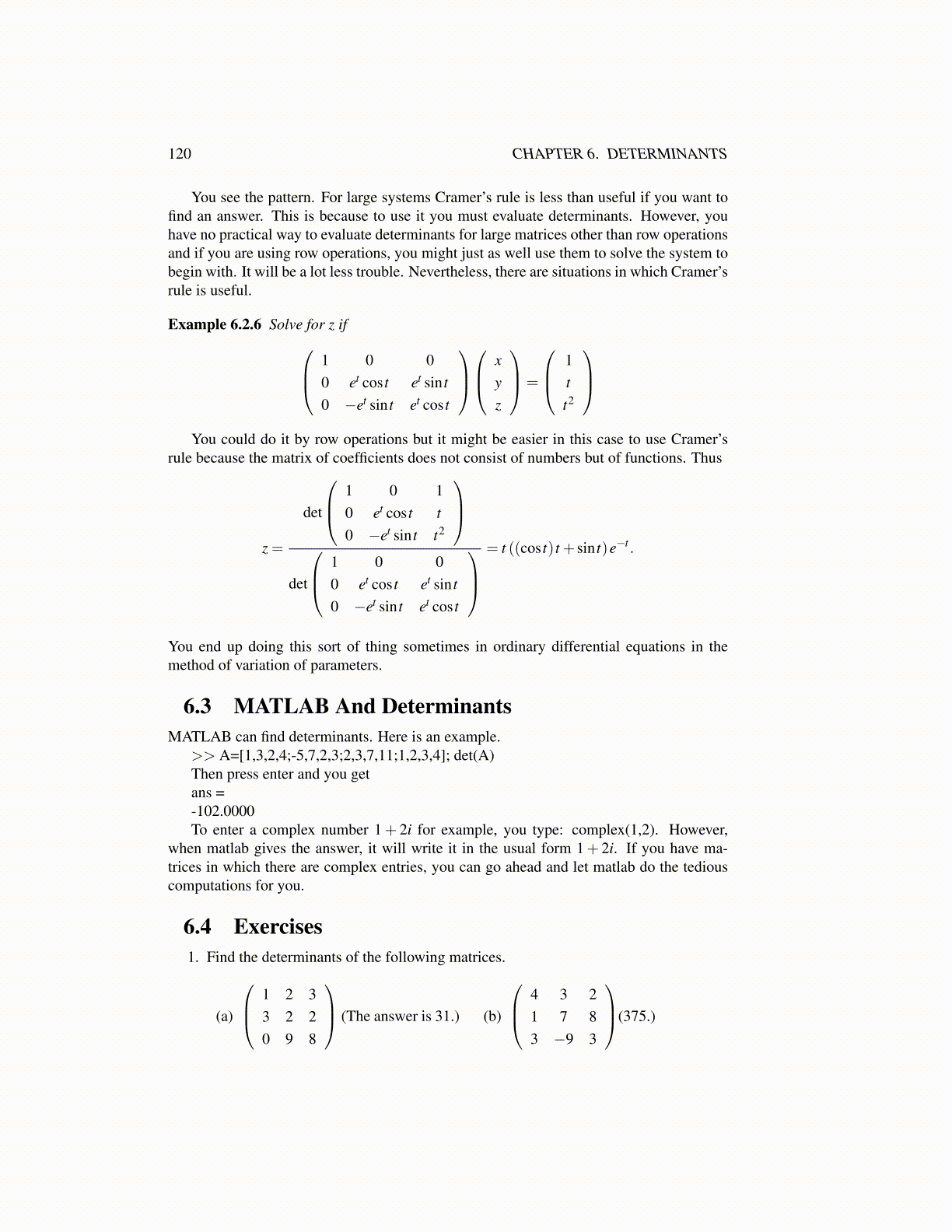
120 CHAPTER 6. DETERMINANTS
You see the pattern. For large systems Cramer’s rule is less than useful if you want tofind an answer. This is because to use it you must evaluate determinants. However, youhave no practical way to evaluate determinants for large matrices other than row operationsand if you are using row operations, you might just as well use them to solve the system tobegin with. It will be a lot less trouble. Nevertheless, there are situations in which Cramer’srule is useful.
Example 6.2.6 Solve for z if 1 0 00 et cos t et sin t0 −et sin t et cos t
x
yz
=
1tt2
You could do it by row operations but it might be easier in this case to use Cramer’s
rule because the matrix of coefficients does not consist of numbers but of functions. Thus
z =
det
1 0 10 et cos t t0 −et sin t t2
det
1 0 00 et cos t et sin t0 −et sin t et cos t
= t ((cos t) t + sin t)e−t .
You end up doing this sort of thing sometimes in ordinary differential equations in themethod of variation of parameters.
6.3 MATLAB And DeterminantsMATLAB can find determinants. Here is an example.
>> A=[1,3,2,4;-5,7,2,3;2,3,7,11;1,2,3,4]; det(A)Then press enter and you getans =-102.0000To enter a complex number 1+ 2i for example, you type: complex(1,2). However,
when matlab gives the answer, it will write it in the usual form 1+ 2i. If you have ma-trices in which there are complex entries, you can go ahead and let matlab do the tediouscomputations for you.
6.4 Exercises1. Find the determinants of the following matrices.
(a)
1 2 33 2 20 9 8
(The answer is 31.) (b)
4 3 21 7 83 −9 3
(375.)